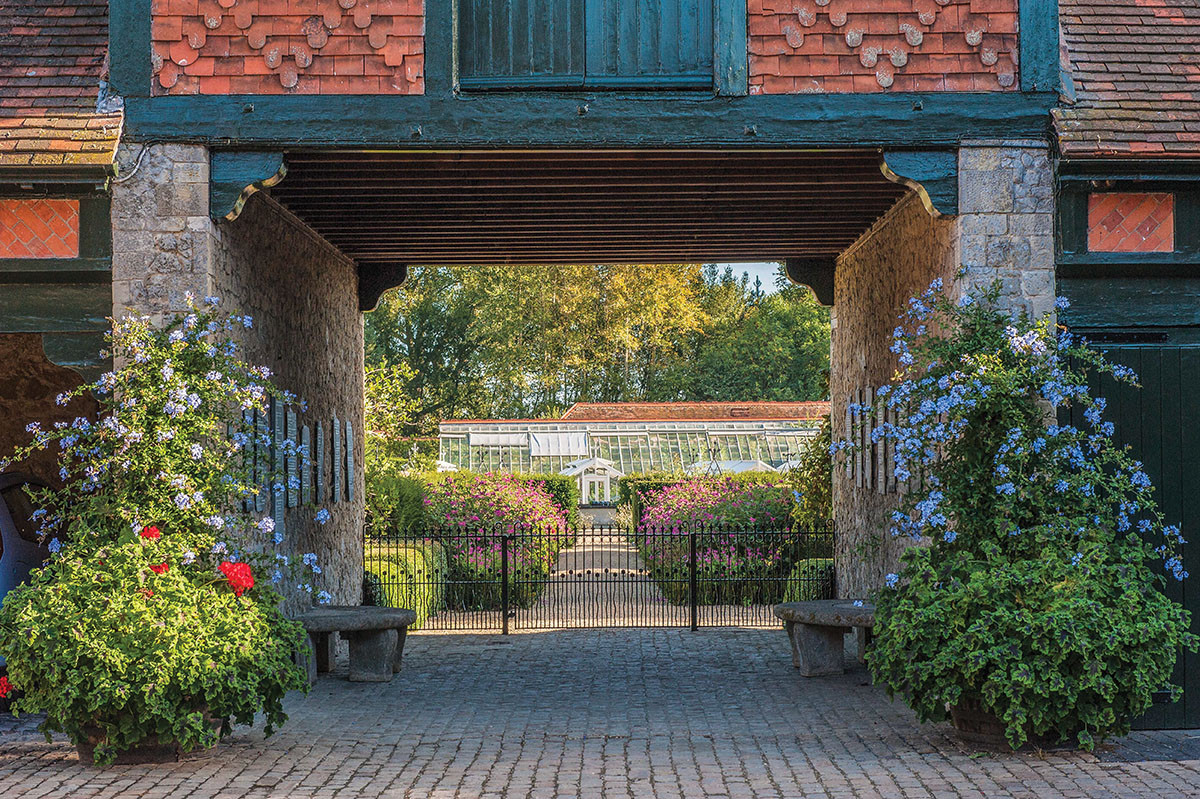
Oversize pots brimming with blue Plumbago auriculata, scarlet Pelargonium ‘Paul Campbell,’ and Pelargonium ‘Chocolate Peppermint’ create a visual preamble to the walled garden. An overflow of Salvia involucrata ‘Boutin’ leads the way to one of many glass houses in the garden.
The thrill of being welcomed into the famously secret garden of Lord Jacob Rothschild’s Eythrope is a sublime experience, akin to inhaling the intoxicating scent of Confederate jasmine for the first time. Whether embarking on an in-person tour or flipping through the pages of Paradise and Plenty, a luscious book about the magical walled garden, the public has access to this enchanted world once only available to a privileged few.

A sunny path to the potting shed showcases Pelargonium austral, Heliotropium arborescens 'Dame Alice de Hales,' and Salvia 'Wendy's Wish.'
First conceived in the 19th century, the gardens supplied produce and flowers for many generations of the Rothschild family before falling into disrepair. When Lord Jacob Rothschild inherited the neighboring 5,000-acre Waddesdon Estate in 1988, he began a lavish reimagining of its surroundings and enlisted Lady Mary Keen to redesign the smaller, former showplace at Eythrope. Two wars and a stint as a rental property had taken a toll on the landscape, and Keen was the perfect choice to reignite its magic. “I had worked on several other projects for Lord Rothschild before this and was thrilled with the prospect of resurrecting the 19th-century garden,” she says. She joined with experienced gardener Sue Dickinson to tackle the assignment.
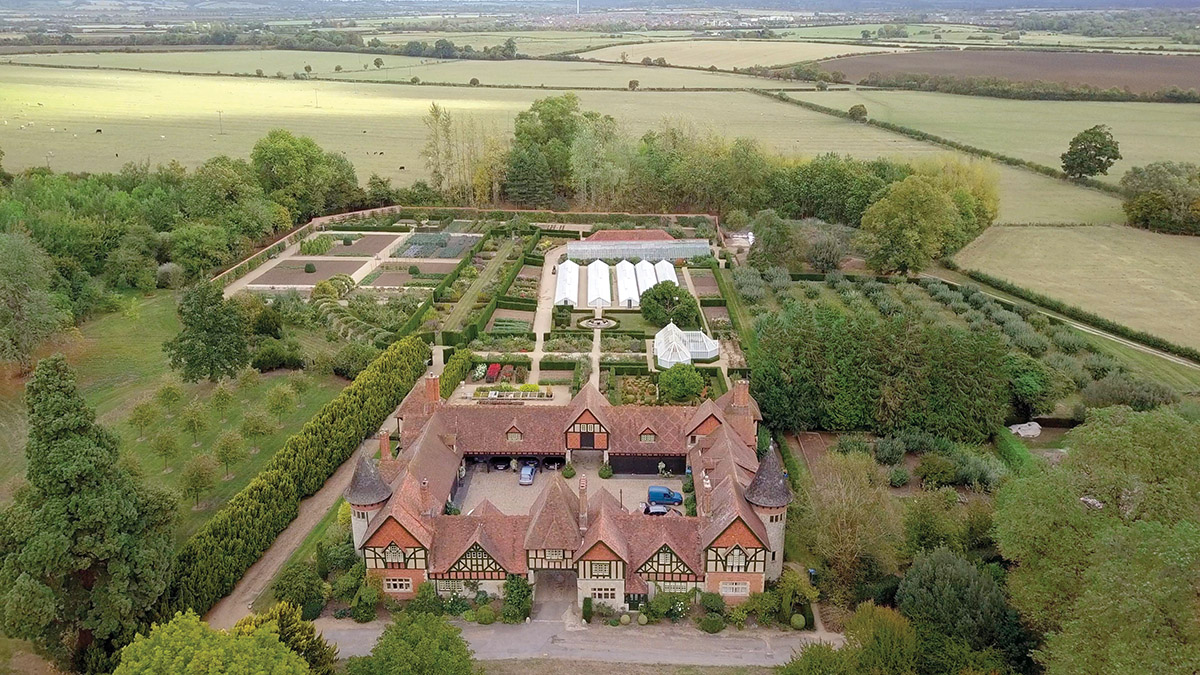
An aerial view reveals the scope of Eythrope’s property and the attention to detail it enjoys. Photo by Mat Sunderland
“The tradition of four squares divided by paths was reinstated for vegetable growing,” says Keen. “Areas were designated for herbs, cutting flowers, and special plant collections. And an orchard that would eventually produce 36 varieties of apples was added, as well as two fanciful herbaceous borders and a few arbors for pears and roses.”
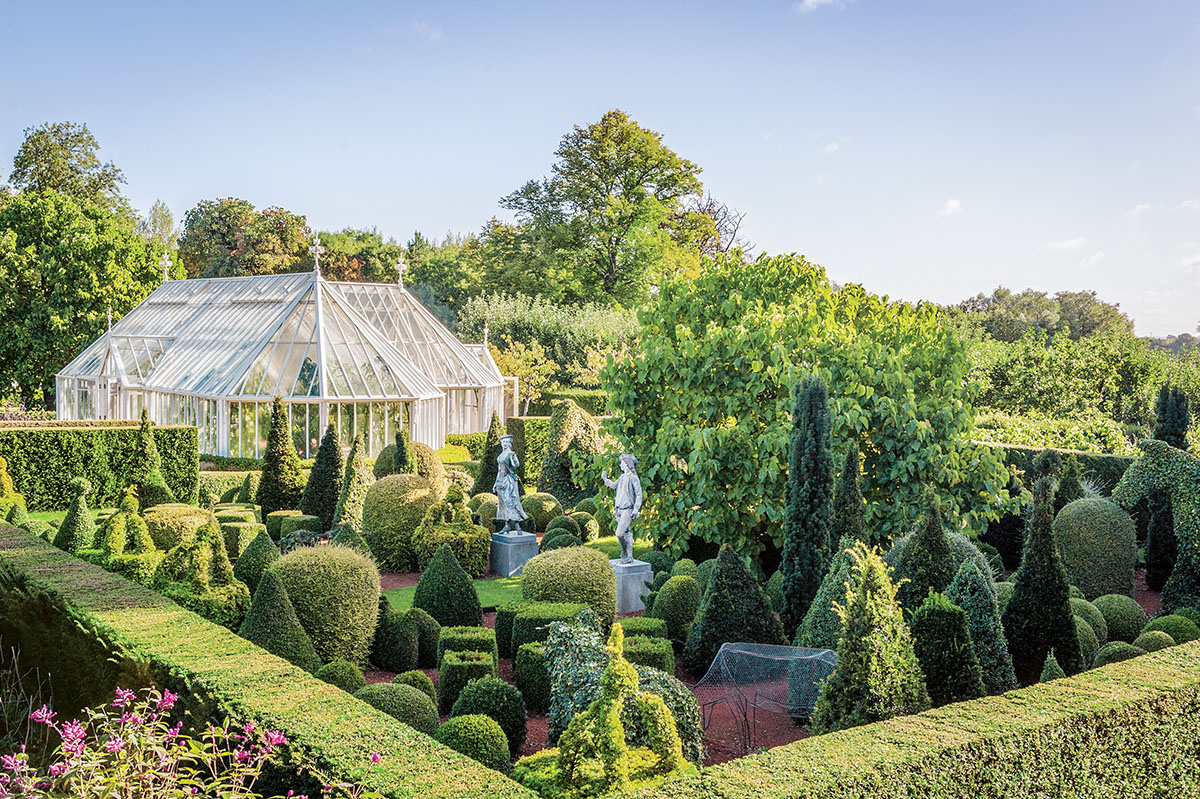
In the topiary garden, whimsicality runs free amid clipped boxwoods, yew, and ivy. Crushed bricks with grass-banded edges contrast with the otherwise muted palette.
Keen’s lofty goals were tailored to the family’s storied past, starting in 1874 when adjoining Waddesdon Estate was acquired by Baron Ferdinand de Rothschild. The young widower, whose wife tragically died during childbirth, occupied the French Renaissance style chateau with his spinster sister, Alice, who had relocated from Frankfurt. When Alice was not acting as hostess, she commissioned whimsical-themed gardens on the property. Eventually, Eythrope became her private retreat.
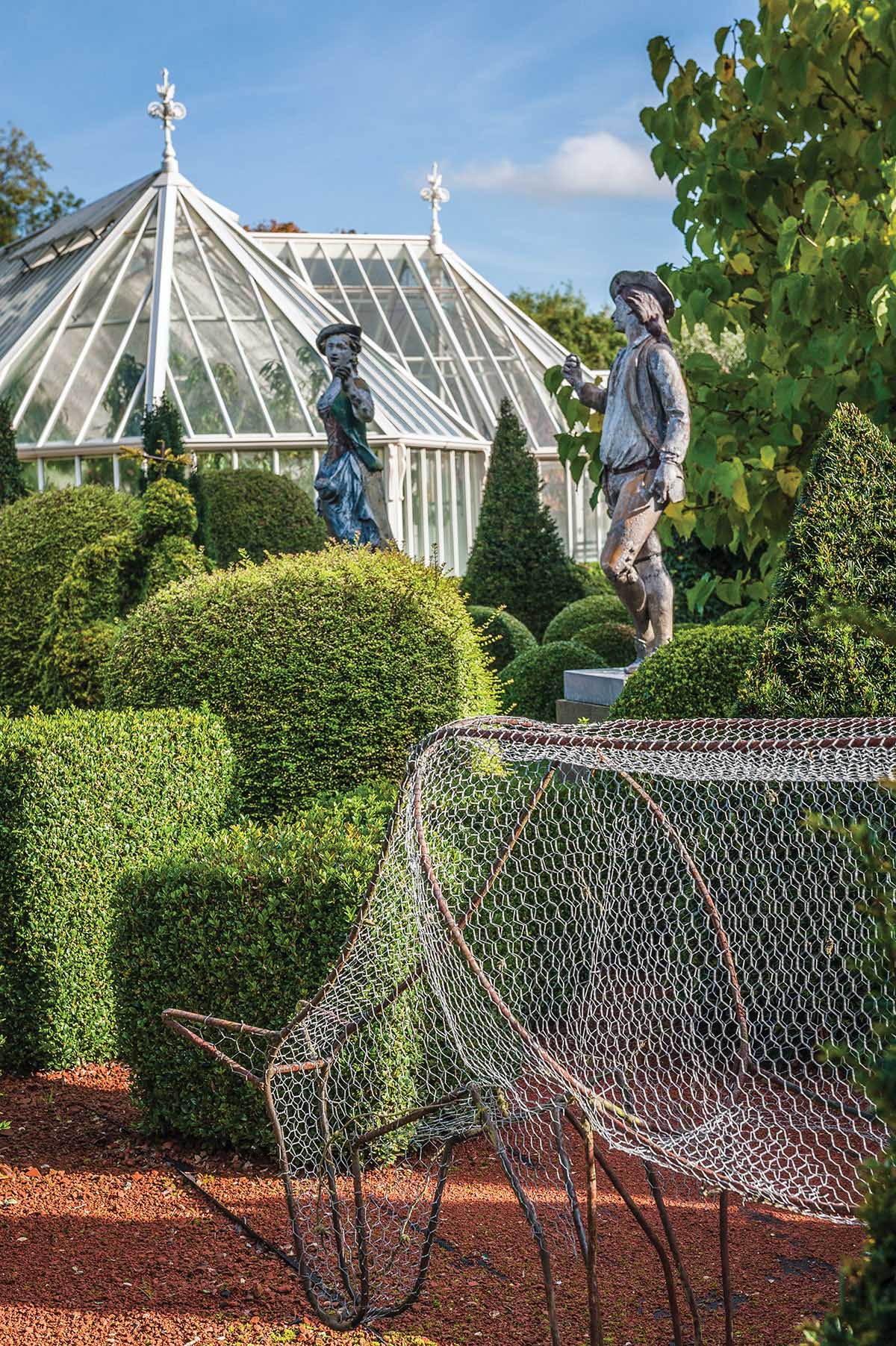
A sculpture collection and animal-shaped wire frames complete a fantastical view through the topiary garden.
Within the architectural backbone of the present day gardens, eight pristine Victorian glass houses stand out. Glistening above the horticultural bounty, the fanciful crystalline buildings resemble fairytale ice houses. During the renovation, the neglected structures were replaced or refitted with coated aluminum supports meticulously copied from the original ones. Among them, the octagonal Cherry House harbors unusual varieties of dessert cherry trees, while a 90-foot-long version is used for propagation and cultivation. Another structure cossets geraniums (pelargoniums) used in bedding designs and house decoration. Others are dedicated to tomatoes, cucumbers, aubergines, and peppers.

In spring, the vinery border is a horticultural virtuoso featuring masses of tulips, such as ’Avignon’, ‘Dordogne,’ and ‘Menton.’ The parterre above features an ornamental sundial framed by fan-trained apple and pear blossoms.
Suzie Hanson, an intensely practical Lancashire gardener, is the current overseer of the horticultural fiefdom. She and hertalented staff are tasked with creating joyous surroundings that cherish the past but welcome reinterpretation. “The techniques employed here are still maintained at the highest standards, but we are also conscious of being efficient,” she says. “The gardening team is so knowledgeable. We represent a combined total of 136 years of experience. As a result, it’s a very happy garden—but we are all still learning.”
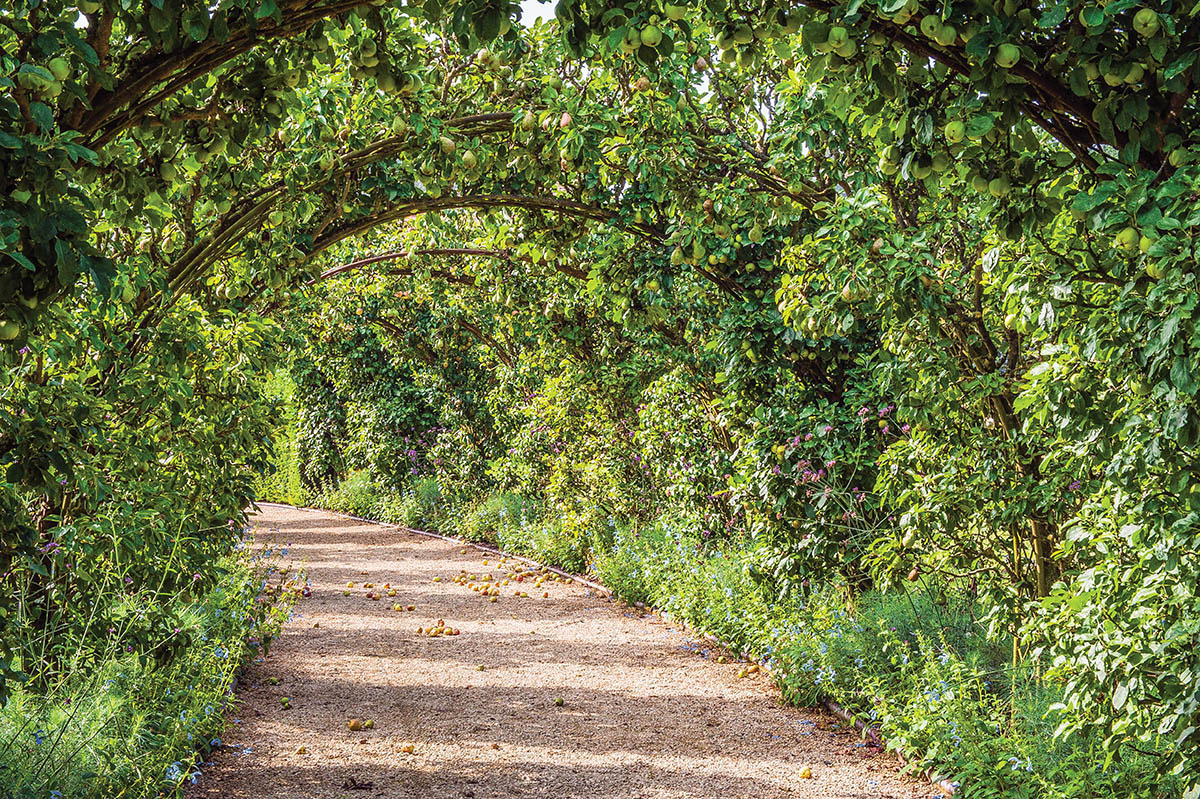
The gracefully curved pear tunnel, draped with heirloom varieties of pears, initially appears as a dreamy vision of frothy pink and white buds.
Garden tours run every Wednesday at 10:30 a.m. and 1:30 p.m. from May through October. Cost: 50 pounds (includes a light meal). Must be booked in advance. Visit waddesdon.org.uk.
By Marion Laffey Fox | Photography by Tom Hatton



